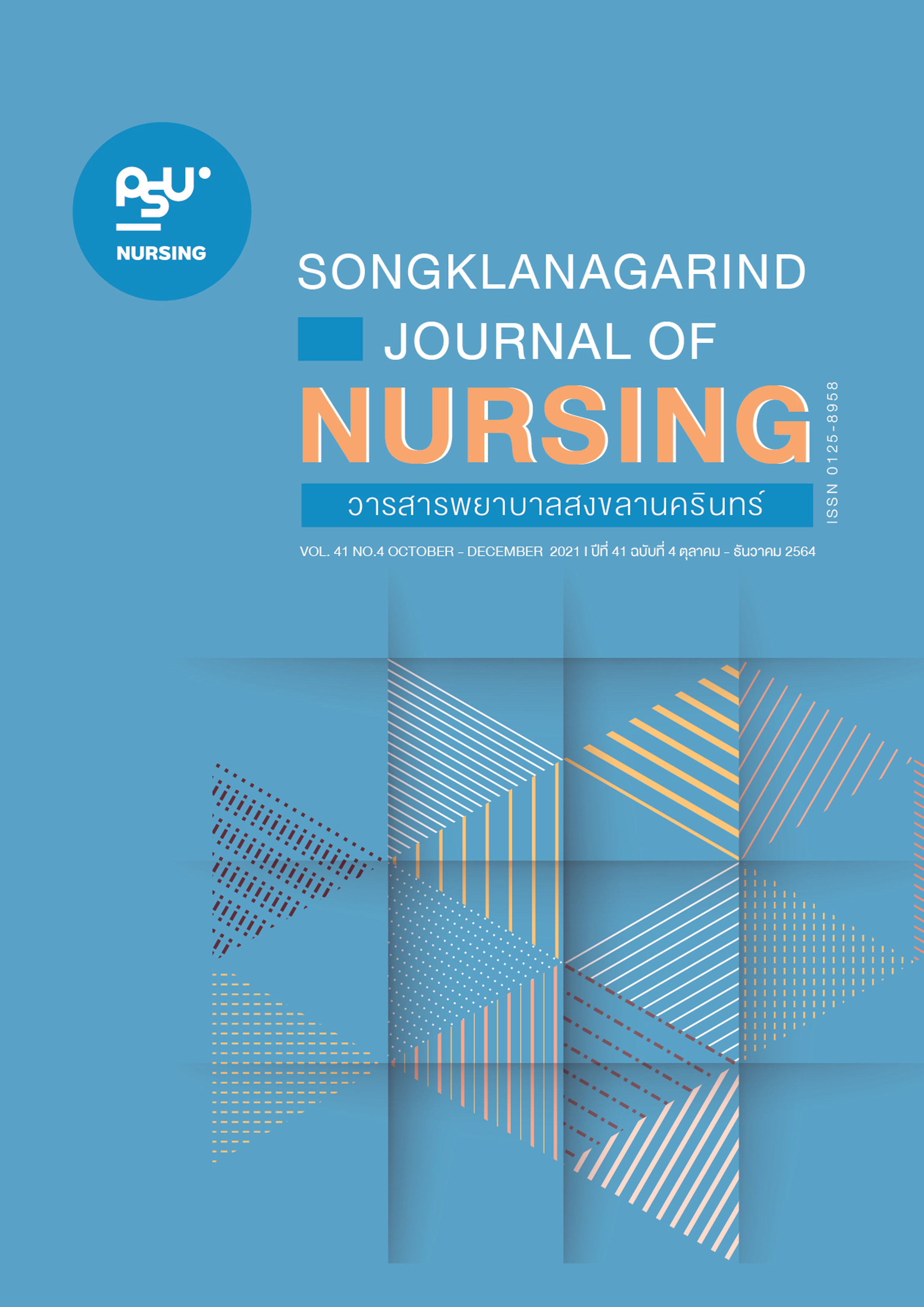Patient Outcomes After Application of Clinical Nursing Practice Guideline for Mild Traumatic Brain Injury Patients
Main Article Content
Abstract
Objective: The purpose of this descriptive research was to explore the level of risk factors, the symptoms the first 24 hours and 7 day at the Emergency Department in a secondary hospital after discharge, the revisit, and the evaluation of risk factors following the implementation of the guidelines. Method: The research sample consisted of 239 patients. Practice Guideline forms were used in data collection. This research was conducted in October - December 2018. The frequency and percentage were used for data analysis. Results: There were 159 male patients (66.53%) greater than women, 103 patients aged 18-30 years were 43.09%, 82 patients (34.31%) had underlying illnesses, namely diabetes, high blood pressure, kidney disease, and migraine. After discharge from the hospital; 188 patients (78.66%) had dizziness; 109 patients (46.61%) relied on painkillers, and 68 patients (26.36%) did not rely on painkillers. The symptom duration reduced respectively by 7 days. The additional symptoms were vertigo (56.49%), sleep disorder (48.59%), and blurred vision (5.02%) during the first 24 hours. 2 patients (0.87%) practiced lying by the fire. 13 patients (5.44%) had low-risk factors, whereas 1 patient (0.42%) had medium-risk factors. The nurses can accurately assess the level of risk factors was 100 percent after the implementation of the guidelines. Conclusion: It indicates that outcome of this study can be used as baseline data to adequately adapt the care models for patients with particular illnesses within on the context of the hospital in order to improve the efficacy and the quality of nursing care.
Article Details

This work is licensed under a Creative Commons Attribution-NonCommercial-NoDerivatives 4.0 International License.
References
Ghebreyesus TA, Bloomberg MR. Global status report on road safety 2018. 9 th ed. Geneva: World Health Organization. 2018.
Thailand road traffic injury road safety 2017 [Internet]. Bangkok; 2018 [cited 2018 Dec 2]. Available from: www.thaincd.com/document/file/info/injured/thailand-of-roadsafty.pdf.
Siripa S, Damnakkeaw K, Kamwongsa O. Injury outbreak and death from accident road traffic in Thailand. Nonthaburi: Bureau of epidemiology, Department of disease control, Thailand; 2009. Thai.
Rangpeung O, Tachakamonsuk P, Sangjantip A. Severe injuries related to motorcycle accident in Thailand 2012. Bangkok: Bureau of epidemiology, Thailand; 2013. Thai.
Steinbuechel NV, Wilson L, Gibbons H, et al. QOLIBRI overall scale. A brief index of health-related quality of life after traumatic brain injury. J Neurol Neurosurg Psychiatry. 2012. 83(11):1041-7. doi: 10.1136/jnnp-2012-302361.
The Royal College of Neurological Surgeons of Thailand. Management of closed head injury. Bangkok: Thana press; 2013. Thai.
The Royal College of Neurological Surgeons of Thailand. Clinical practice guidelines for traumatic brain injury. Bangkok. 2013. Thai.
Titler MG, Kleiber FC, Steelman VJ, et al. The Iowa model of evidence-based practice to promote quality care. Crit Care Nurs Clin North Am. 2001; 13(4): 497-509. doi: https://doi.org/10.1016/S0899-5885(18)30017-0
Cochran WG. Sampling techniques. The United States of America; 1997.
World Health Organization. Sample size determination in health studies; 1991.
Ta-ue I, Utriyaprasit K, Chayaput P, et al. The relationships between post-concussion syndrome and functional status in patients with mild traumatic brain injury. JTNMC. 2010; 25(2) 39-53. Thai.
Deethongkham D. Relationship between post-concussion syndromeand functional performance in patients with mild traumatic brain injury. [master’s thesis]. [Chonburi]: Burapha University; 2015. 113 p. Thai.
Suwanpitak W, Vipawakarn S, Prakeetavin B. Development of clinical nursing practice guideline for patients with mild traumatic brain injury in Krabi Hospital. SCNJ. 2017; 4(2): 140-56. Thai.
Phunamyoi P. Development of the clinical nursing practice guideline for initial assessment of patients with mild traumatic brain injury emergency phase. [master’s thesis]. [Khon Kaen]: Khon Kaen University; 2015. 129 p. Thai.
NSW. Institute of trauma and injury management. Adult trauma clinical practice guidelines initial management of closed head injury in adults. Chatswood; 2015.
Dayan PS, Holmes JF, Hoyle JJ, et al. Headache in traumatic brain injuries from blunt head trauma. Observational study. 2015; 135(3): 504-12. doi: 10.1542/peds.2014-2695.
Erickson JC, Treatment outcomes of chronic post traumatic headaches after mild head trauma in US soldiers: An observational study; 2011.
Hickey JV. The clinical practice of neurological and neurosurgical nursing. 7 th ed. Philadelphia: Wolters kluwer/Lippincott Williams & Wilkins; 2014.
Thuphirea P. Handbook of drugs nursing. 14 th ed. Bangkok: L.T. Press Co., Ltd; 2016. Thai.
Sadoughi A, Rybinnik I, Cohen R. Measurement and management of increased intracranial pressure. BMJ Open; 2013. 6(2): 56-65. doi: 10.2174/1874828701306010056.
Simmons JW, Powell MF. Acute traumatic coagulopathy: pathophysiology and resuscitation. BJA. 2016. 117(5) 31–43. doi: https://doi.org/10.1093/bja/aew328.


